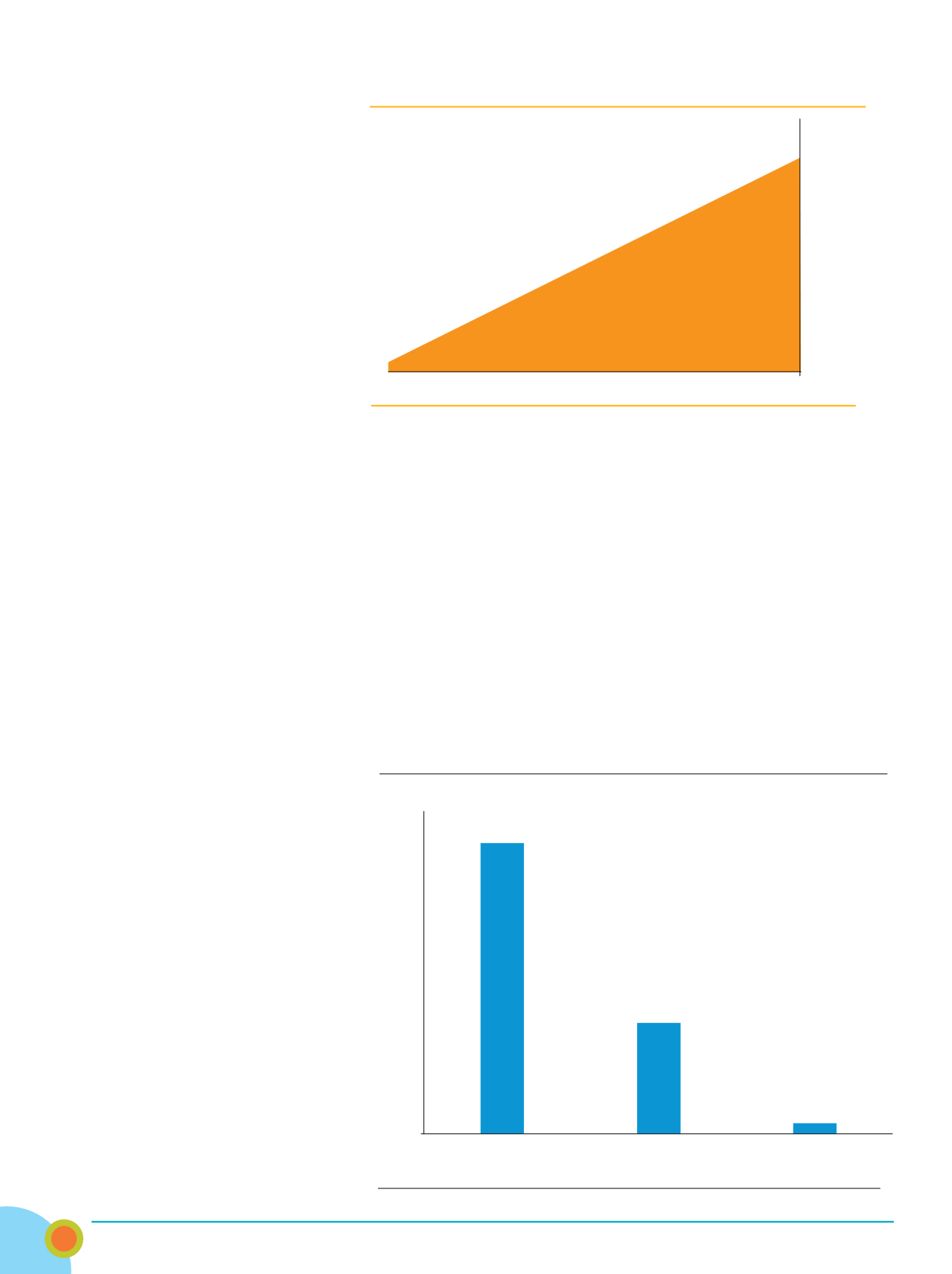

The “silent salesperson” has found
its voice, plus a lot more.
Yet as intriguing and potentially
disruptive as SCOTTeVEST’s innova-
tive display truly is, it’s just a tease of
the type of smart technologies that are
beginning to appear on retail sales
floors. At the ever-quickening pace of
technology adoption, advanced applica-
tions using artificial intelligence, machine
learning and natural language process-
ing (sometimes lumped together as AI-
ML-NLP) are creeping into to retail back
rooms and sales floors. It’s the type of
stuff that regulates current hot technolo-
gies in areas such as cloud, mobile, as-
a-service and social as little more than
utility services. And whereas those tech-
nology investments up to this point have
largely been about chasing the customer
across channels, the second wave of
technology is more about attacking costs
and streamlining operations. It’s a “future
of retail” that is much closer than most
people think, and, make no mistake, it
will dramatically alter a brick-and-mortar
business model that is in desperate
need of an upgrade.
It’s easier to confine innovations
such as robotics, automation and smart
machines as primarily being deployed
on assembly lines or in warehouses,
largely replacing “low-skilled” labor-
ers performing non-thinking, repeti-
tive tasks. Still, more recently we’re
also seeing really smart software and
machines handle many “white collar”
and “thinking-oriented” tasks, such
as robo-advising within the financial
services sector, reporting on live sport-
ing events, answering and directing
customer service calls or taking orders
and processing payments at restaurant
tables. There is even a free chatbot
called DoNotPay that has successfully
challenged 160,000 parking tickets –
around $4 million worth of fines – in
London and New York.
Basically, if your job doesn’t require
negotiating, you never have to be
clever, and you are not required to per-
sonally help others (oh yeah, and you
don’t have to fit in tight places), there’s
a good chance you could be replaced
by smart machines and/or software. At
least that’s what researchers in a study
led by Oxford University concluded.
Out of nine possible traits, those four
scored as the most important. Among
the many job roles with a high-90s per-
centage likelihood of being automated
were claims adjusters and insurance
underwriters; tax preparers, accoun-
tants and legal secretaries; real estate
brokers and loan officers; payroll and
account clerks; restaurant cooks and
host/hostesses.
A few retail jobs also were among
the most likely to be automated,
according to the experts polled by Ox-
ford researchers. A retail salesperson
has a 92.3 percent chance of being
replaced by machines and artificial
intelligence. Cashiers have a 97 per-
cent chance of being automated. That
compares to say an advertising sales
agent or massage therapist (both 54
percent likelihood) and a choreog-
rapher or sales engineer, both at 4
percent likelihood. (Retail managers,
meanwhile, had a 28 percent chance
of being replaced by machines.)
All told, the Oxford University study
found that 50 percent of jobs could get
taken over within the next 10 to 20 years
– a prediction backed up in a McKinsey
report released last year, which sug-
Amazon Robots Installed inWarehouses
Source: Citi Research; Business Insider Intelligence
35,000
30,000
25,000
20,000
15,000
10,000
5,000
2013
2014
2015
Median Probability of Automation
pping
010
011
012
013
014
015
Probability of Automation by an Occupation’s
Median HourlyWage
Source: White House Council of Economic Advisers
0.9
0.8
0.7
0.6
0.5
0.4
0.3
0.2
0.1
0.0
Less than 20 Dollars
20 to 40 Dollars
More than 40 Dollars
Median Hourly Wage in 2010
0.83
0.31
0.04
Inside
Outdoor
|
Summer
2016
18
















